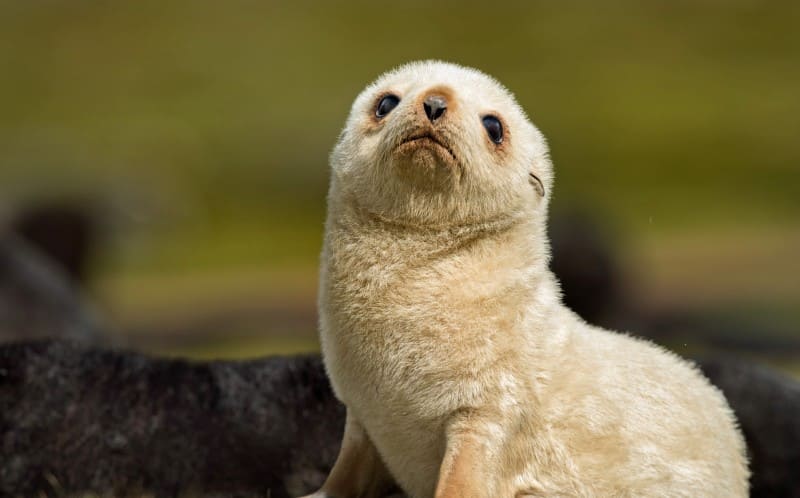In the South Georgia Islands, A Very Rare Blonde Baby Seal Has Been Spotted
Roie Galitz, a wildlife photographer, had discovered a blonde newborn seal. The meeting took happened on the South Georgia Islands. For Roie, this was a once-in-a-lifetime opportunity. Furthermore, blonde seals make considerably fewer than 1% of the total population of seals. As a result, they are exceedingly uncommon. This is something Lexnau mentions.

Roie describes the seal as “adorable.” It had struck the ideal photographing position. The circumstance was genuinely one-of-a-kind. As a result, he couldn’t afford to be distracted. Distraction would mean Roie would miss out on a once-in-a-lifetime opportunity!
Mr. Galitz was with the seal for over two hours. He was attempting to capture the ideal moment. He was able to accomplish this when the seal was sunbathing in a grassy area. The adorable animal enjoys rubbing noses with his friends. He also enjoys rolling around on the grass with his friends.
Genetic mutations are present in the majority of animals before birth. As a result of these mutations, the skin color changes. This distinguishes them from the rest of the throng. Albino or melanin-based mutations are also possible. This has been mentioned by Paws Planet. However, just because an animal has a skin mutation does not mean it is disabled. The majority of animals with skin mutations may lead regular lives.
Furthermore, the majority of animals tend to become outsiders in their community. Because of the varied skin tones, this is the case. This seal, on the other hand, is not an outcast. He is regarded as one of his colony’s members. As a result, his fellow members of the organization treat him warmly.

Seals like to dwell in colder climates. The arctic is one of the best places to look for them. They have a thick coating of fat on their bodies to insulate them from the cold. This thick coating of fat is known as blubber. They also have a thick fur coat. This insulates them even more from the cold.
The seals are under grave danger as a result of global warming. Their dwellings are being destroyed by the melting of the polar ice caps. Furthermore, they are unable to adjust to the rise in temperature. As a result, their numbers are decreasing. Seals face a food scarcity as a result of global warming. This puts them in much more danger.